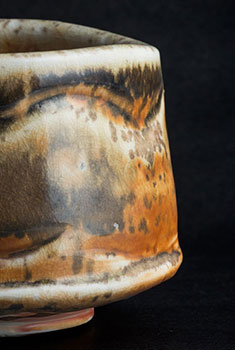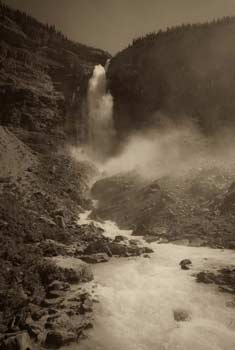- Ceramics
- Artist Pages
- Asian Ceramics & Tea
- Ceramics Artist Links
- Ceramics Links
- Ceramics Terms Glossary
- Agateware
- Banding Wheel
- Bat, Throwing Bat
- Bisqueware, Biscuit Ware
- Blistering
- Blow Up
- Boat Anchor
- Calipers
- Carbon Coring, Black Coring
- Carbon Trap
- Chuck, Chum
- Coil
- Colorants
- Crazing
- Downdraft Kiln
- EPK, Edgar Plastic Kaolin
- Electric Kiln
- Extrusion, Extruder
- Fettle, Fettling Knife
- Force Dry
- Greenware
- Kaolinite
- Kilnsitter
- Overglaze
- Pinholing
- Plucking
- Pug Mill
- Pyrometric Cones
- Raku
- Rib
- Sgraffito
- Shelf Of Shame
- Slab Roller
- Slip
- Test Tile
- Knowledge
- Frequently Ignored Answers
- Photography
- Photographers
- Photo Links
- Raw File Converters
- Camera Simulators
- Color Vision Games
- Frequently Ignored Answers
- Resources
- Contact
Elements of Art/Design and Principles of Design/Organization
Whole books are written about each of these art terms, filled with definitions, histories, insights, tips, and examples - these pages are just the tip of the iceberg. Each entry leads to its own page with some more information and examples, which should grow over time - feel free to make suggestions. Clicking on any of the example images will lead to more information about the artist or work.
The Elements of Art and Design:
- Line
A continuous mark made on a surface by a moving point; it may be flat (pencil line) or three-dimensional (a rod, groove, ridge, etc.) Line may be explicit - a line painted along the edge of the road - or implied by the edge of a shape or form. Lines are used to outline (diagrammatic or contour lines), create shading and show form (structural lines, hatching and cross-hatching), decorate, express emotion, and direct the viewer's eye. Lines can be categorized as horizontal, vertical, diagonal, curved, and zigzag.
Lines can be hard, sharp, straight, geometric; they can be organic, smooth, soft, flowing, loopy, wavy.
Lines can remain a constant thickness (descriptive, analytical, objective, showing little of the action used to create them) or vary in thickness along their length (flowing, calligraphic, lyrical, showing emphasis and something of the gesture used to make them).
Expressive, gestural lines shout the force, speed and emotion put into their making. They swoop, slash, scar, skip, skid, stutter, sing, whisper, drip, bleed, splash across the surface. Lines that are sketchy and unsure express uncertainty and weakness, and are generally less pleasing. More confident lines left to build up as the artist attempts to capture her subject can display character, process of investigation, and interest.
Lines can loop closed around a shape and have no end-points (outline), or at the ends they can be flared, frayed, splayed, rounded, tapered, or cut off at any angle.
Lines divide the space and volume they are in. At the same time, they can unite and tie elements together.
See more.- Shape
An enclosed space defined by a line or by contrast to its surroundings. Shapes are two-dimensional (flat): circle, square, triangle, organic blob, etc. In everyday usage, the word 'shape' is also used to talk about three-dimensional form, often as something of a shorthand for referring to the two-dimensional outline or silhouette of the object. When discussing art, your meaning will be clearer if you reserve using 'shape' to talk about two-dimensional shapes on a plane.
See more.- Space
The distance or area around or between elements of an artwork. The illusion of depth created on a flat surface through the use of perspective, overlapping elements, size, level of detail, color and value.
See more.- Color
The visible spectrum of radiation reflected from an object. Three properties of color are:
- Hue – The name of the color (red, green, etc.)
- Intensity or Saturation – The purity (brightness or dullness) of the color. Pure red is bright; red mixed with a little green becomes less intense, more neutral.
- Value or Brightness – The lightness or darkness of a color. How much white or black shows through or is mixed in. Can be used to depict light and shadow on a color and help show volume/form.
Other terms used to talk about color include tint, shade, tone, temperature (warm, cool, neutral), and various color harmonies or schemes, such as monochromatic, analogous and complementary.
See more.- Value
How light or dark an object or element is, independent of its color. Shading uses value to depict light and shadow and show volume/form.
In general, work using a full range of values will stand out more and be visually richer and more pleasing. Purposely using a limited range of values (all darks, grays, or lights) can set the mood of the piece, from mysterious to peaceful to ethereal. Work that uses only very bright and very dark values, with no grays or middle tones, is very contrasty and can be very bold, stark and stylized.
Low Key and High Key
Pictorial works that exhibit mostly dark values (dark or minimally lit subject on dark background) are called low key, while works with brightly lit subjects and washed-out or white backgrounds are called high key. High key is used in female portrait photography, for example, and can convey delicacy, innocence and dreaminess. Low key work can create a sense of the nocturnal and secretive, of things hidden just beyond sight.
See more.





The Principles of Design and Organization:
- Balance
The distribution of interest or visual weight in a work. If all the visually interesting elements of a work are centered in one spot, the work is off-balance and the viewer's gaze will be stuck in one place, ignoring the rest of the piece. A balanced piece of work will have art elements arranged such that different areas draw the viewer's eye around or through the whole piece. Some types of balance are symmetric, asymmetric, and radial.
The concept of visual balance is often illustrated using a seesaw. Like a seesaw, when two elements of an artwork have the same visual weight and are on opposite sides of the center, equally distant from it, they balance. Likewise, a smaller element can balance out a larger one if the smaller one is farther from the center and the larger one nearer. In two-dimensional art, the center of the work serves as the fulcrum (the visual center). In three-dimensional art, visual balance and the physical balance of mass both come into play, and the balance of one does not assure the balance of the other.
See more.- Contrast
The difference in quality between two instances of an art element, or using opposing qualities next to each other. For example, black and white (contrasting values), organic/curvy and geometric/angular (contrasting lines/shapes/forms), and rough and smooth (contrasting textures).
The greater the contrast, the more something will stand out and call attention to itself. This applies to whole works of art as well as areas within an artwork. Areas with greater contrast in value (stronger darks and lights) will tend to appear more forward in space, as over distance atmospheric haze lessens contrast (atmospheric perspective). Contrast can also be used to set the mood or tone of the work. High contrast makes a work more vibrant, vigorous, brash, lively - it "pops" more. Low-contrast work is more quiet, calm, subtle, reflective, soothing.
See more.- Emphasis, Dominance and Focal Point
Emphasis is created by visually reinforcing something we want the viewer to pay attention to. Focal points are areas of interest the viewer's eyes skip to. The strongest focal point with the greatest visual weight is the dominant element of the work. Elements of secondary importance could be termed sub-dominant, and elements with the least visual weight subordinate. Isolation, leading lines and convergence, contrast, anomaly, size, placement, framing, focus and depth of field, and absence of focal points are some of the strategies used to help create these degrees of importance.
See more.- Harmony and Unity
Harmonious elements have a logical relationship or progression - in some way they work together and complement each other. When a jarring element is added - something that goes against the whole - it is said to be dissonant, just like an off-note in a musical performance. Unity is created by using harmonious similarity and repetition, continuance, proximity and alignment, and closure of design elements in different parts of the work so that the parts RELATE to each other and create a unified whole, that can be greater than the sum of the parts, rather than an ill-fitting and meaningless assortment of elements.
See more.- Movement
Using art elements to direct a viewer's eye along a path through the artwork, and/or to show movement, action and direction. Also, giving some elements the ability to be moved or move on their own, via internal or external power.
In a still picture such as a painting or photograph, where nothing is actually moving, various strategies can be used to give the viewer a sense of movement and speed, or to move the viewer's eye through the work. These include lines, diagonals and unbalanced elements; blurring; placement; direction; and motion lines and afterimages.
See more.- Repetition, Rhythm and Pattern
Repeating art elements in regular or cyclical fashion to create interest, movement, and/or harmony and unity. Rhythms can be random, regular, alternating, flowing, and progressive. Classes of pattern include mosaics, lattices, spirals, meanders, waves, symmetry and fractals, among others.
See lots more.- Proportion and Scale
Proportion is the relationship of sizes between different parts of a work. For example, how wide it is compared to how tall it is. Some proportions, such as the golden ratio and the rule of thirds, are thought to be more naturally pleasing. Scale is the size of something compared to the world in general - an artwork might be termed miniature, small scale, full scale or life-size, large scale or larger than life, or monumental.
See more.- Variety and Variation
Using a range of different qualities or instances of an art element to create a desired visual effect - e.g., a variety of shapes, colors, etc. Variety can add interest and break the monotony of simple repetitions.
See more.














